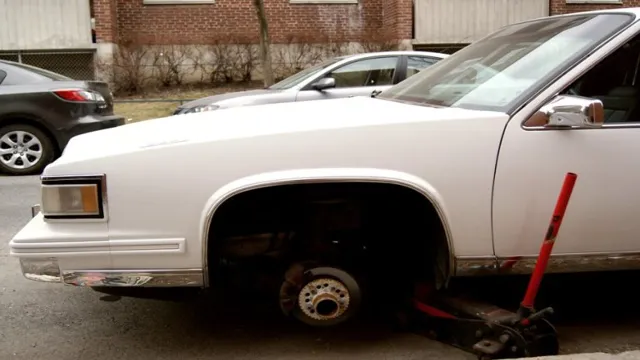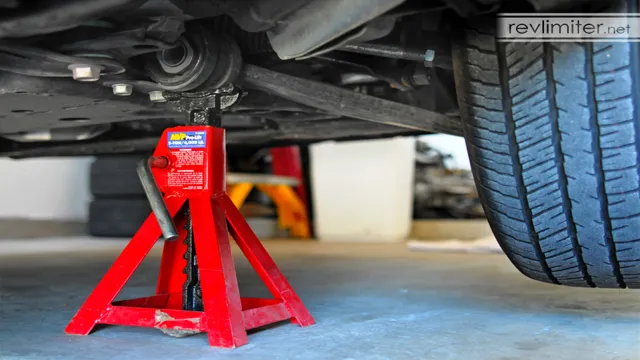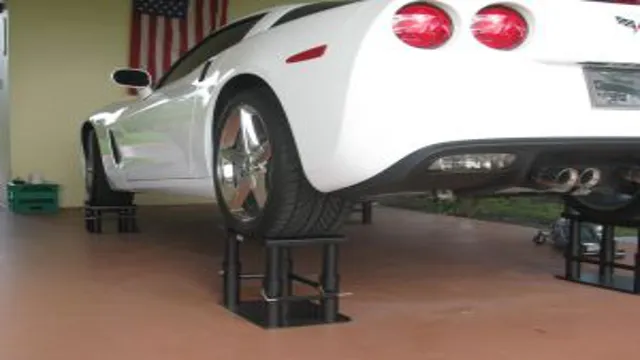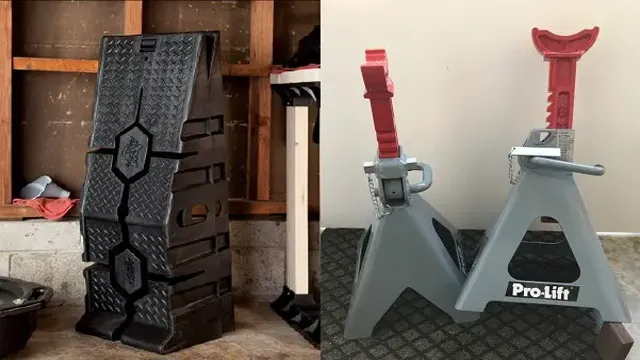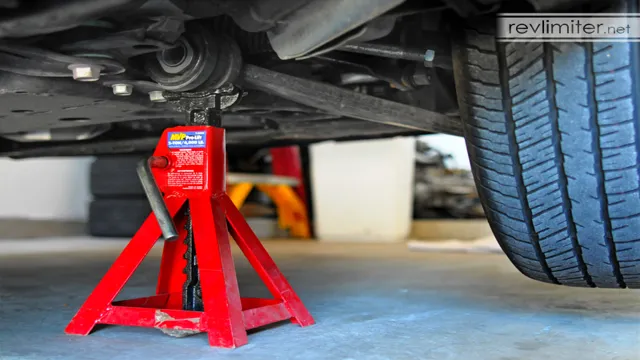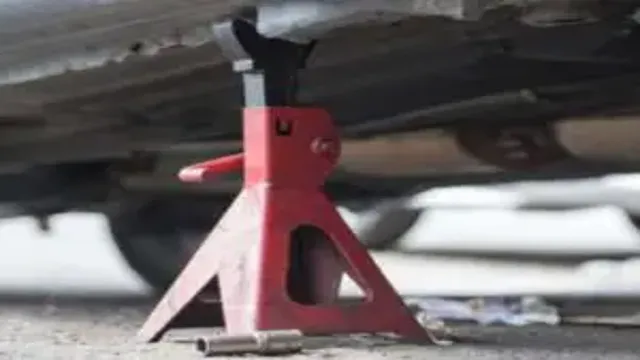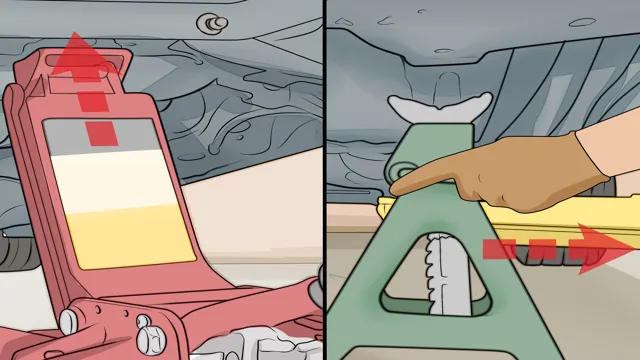Where Should You Put Jack Stands: A Comprehensive Guide for Securing Your Vehicle
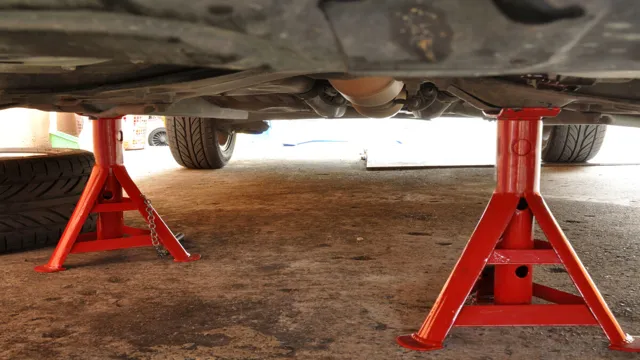
As a car owner, you may have heard people talking about the importance of using jack stands to ensure your safety while working underneath your vehicle. Sure, lifting your car with a hydraulic jack is the easy part, but where and how should you place those jack stands? The proper placement of jack stands is crucial to prevent your car from falling on you, causing serious harm or even death. In this blog post, we’ll dive into the details of jack stand placement, why it’s vital, and some tips to make the process totally stress-free.
So, buckle up (pun intended), and let’s get started!
Introduction
When it comes to working on your car, safety should always be a top priority. One key safety step is to use jack stands to provide additional support while the car is lifted. But where should you put jack stands? It’s important to choose the right location to ensure stability and prevent accidents.
Typically, jack stands should be placed on a flat, level surface that is strong enough to support the weight of the car. The stand should also be positioned under a sturdy part of the car’s frame or suspension, such as the front axle, rear axle, or pinch welds. It’s important to avoid placing the stand on any part that could bend or break under the weight of the vehicle, such as the engine or body panels.
By taking the time to carefully position your jack stands, you can help ensure a safe and successful DIY car repair or maintenance project.
Explanation of Jack Stands and Why They are Important
Jack stands are an essential tool for any DIY mechanic or professional mechanic. They provide a safe and secure way to lift a vehicle off the ground and support it while repairs or maintenance are being carried out. Using a jack stand can prevent accidents, such as the car falling off the jack, which can cause serious injury or even death.
The use of jack stands can also prevent damage to the vehicle’s undercarriage and suspension components. Jack stands are typically made from steel or aluminum and come in different weight capacities. It is important to ensure that the weight capacity of the jack stand matches the weight of the vehicle being lifted.
Always follow the manufacturer’s instructions when using jack stands and never rely solely on a jack to support a vehicle. Safety should always be the top priority when working on a car, and using jack stands is a crucial part of ensuring a safe working environment.
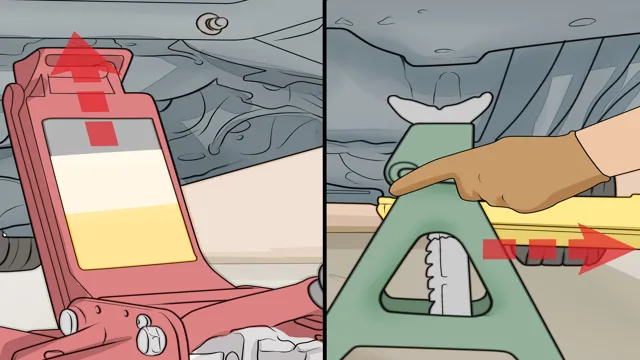
Statistics on Car Accidents and Proper Use of Jack Stands
Car accidents are a common occurrence on the roads, with many factors contributing to them such as driver negligence, bad weather, and equipment failure. According to statistics, car accidents are one of the leading causes of death globally. It is therefore vital to ensure that all safety measures are taken to prevent such risks.
Jack stands are commonly used when working on vehicles at home or in a garage, and their proper use is crucial in preventing accidents. Neglecting to use them correctly can result in devastating consequences, including serious injury or even death. As such, it is crucial to understand how jack stands work and to always follow the manufacturer’s instructions when using them.
Proper use of jack stands can go a long way in preventing accidents and keeping everyone safe on the road.
Finding the Right Spot for Your Jack Stands
When it comes to using jack stands, one of the most important considerations is where to put them. Generally, you want to place the jack stands on flat, level ground, ideally on a concrete surface. Avoid using jack stands on asphalt or gravel, as they can sink or shift over time.
Once you have found a suitable surface, it’s time to identify the right pickup points for the jack stands. Most cars have designated points for jack stands, which are often indicated in the owner’s manual. You can also look for reinforced areas under the car, such as the frame rails or the suspension mounting points.
Remember, the jack stands need to be positioned symmetrically on each side of the car, and they should be placed in a location that provides adequate support for the weight of the vehicle. If you’re not sure where to put your jack stands, don’t hesitate to consult an experienced mechanic or professional for advice.
Identifying the Jacking Points on Your Vehicle
When it comes to getting under your car, finding the right jacking points is crucial. The last thing you want is for your car to come crashing down, potentially injuring you or damaging your vehicle. Before you start searching for the ideal spot to place your jack stands, take a look at your owner’s manual.
This will give you an idea of where the manufacturer recommends you place the jacks. If you don’t have access to the manual, you can typically find a diagram online. The general rule of thumb is to place the jacks on the sturdy parts of the car’s frame, away from plastic parts or anything that could crack under pressure.
Some common jacking points include the pinch welds, rear axle, and the differential. Make sure to double-check that the stand is securely in place before starting any work. Taking the time to find the right spot for your jack stands can save you from a costly mistake in the long run.
Safely Raising Your Vehicle and Placing the Jack Stands
When it comes to working on your car, safely raising the vehicle and placing the jack stands is crucial. First things first, you need to find the right spot for your jack stands. Ideally, this should be on a flat surface to prevent your vehicle from rocking.
You can place them either behind or in front of the wheels you’ll be working on. However, make sure to consult your car’s owner manual to find the exact location of the jack points. Once you have located the jack points, position the jack stands directly below them on the pinch weld or frame rail.
Also, ensure that the jack stands are level and at the same height on each side before lowering the vehicle onto them. It’s essential to cross-check that the jack stands are securely in place before relaxing underneath the car. Taking these precautions will ensure that your vehicle is stable, and you can work on it safely without any risk of an accident.
Recommended Placement Locations for Rear-Wheel Drive and Front-Wheel Drive Vehicles
When it comes to using jack stands on your vehicle, it’s important to know where to place them properly, especially if you have a rear-wheel drive or front-wheel drive vehicle. For rear-wheel drive cars, the recommended spot for the jack stands is underneath the frame rails, just behind the front wheels and in front of the rear wheels. This is because the weight of the car is distributed more towards the rear, making it more stable and secure.
On the other hand, for front-wheel drive vehicles, the jack stands should be placed on the reinforced sections of the subframe just under the engine. This is because the weight of the car is concentrated towards the front, and placing the jack stands here provides a secure balance. It’s crucial to avoid placing the jack stands on any part of the vehicle that isn’t designed for support, as this can result in damage and potential safety hazards.
Tips for Safe Use of Jack Stands
When using jack stands, it’s crucial to place them in the appropriate location to ensure your safety and prevent accidents. The first step is to find a flat and stable surface to set up the stands. You should never attempt to use jack stands on uneven terrain or gravel as they could easily tip over.
Once you’ve found a suitable surface, locate the jacking points on your vehicle and carefully lift it with the jack. After ensuring the jack is stable, place the jack stands under the recommended points and slowly lower the vehicle onto the stands. The key to safely using jack stands is to follow the manufacturer’s instructions and never exceed the weight limit.
Additionally, always double-check the jack stands before working on the vehicle and never tamper with or modify them. By taking these precautions, you can feel confident in the safety of your vehicle and avoid any potential accidents. Where should you put jack stands? Always refer to your vehicle’s owner manual and the manufacturer’s instructions for the correct placement of jack stands.
Using Chocks and Wedges to Prevent Rolling and Sliding
When working under a vehicle, it’s important to use jack stands to prevent accidents. However, it’s not enough to just set the jack stands and assume the vehicle won’t move. Using chocks and wedges will prevent rolling and sliding.
Chocks are blocks that are placed against the wheels of the vehicle to prevent it from moving forward or backward. Wedges are placed under the wheels to keep the vehicle from rolling side to side. It’s important to select the right size and material for these safety tools.
Rubber chocks are recommended as they grip the surface better and won’t slip. Wooden wedges are also a great option as they won’t damage the wheels, but they can break over time. Always make sure to place the chocks and wedges securely and double-check that the vehicle won’t move before starting work.
Remember, safety should always be the top priority when working on a vehicle.
Avoiding Over-extension and Overloading of the Jack Stands
When it comes to using jack stands, safety should always be the top priority. Over-extension and overloading of jack stands can lead to serious accidents. To avoid over-extension, it’s essential to use the right size of jack stand for the weight of the car.
Always refer to the manufacturer’s recommendation for the weight limit of the jack stand before use. Overloading the jack stand can cause the stand to collapse, which can cause severe injuries to yourself or the vehicle. Therefore, it’s essential to use more than one jack stand at a time, at least two stands to safely support the car.
Furthermore, it’s crucial to ensure that the weight load of the car is distributed evenly between the two jack stands. It’s not enough to place the stands under any part of the vehicle. Instead, the best practice is to use jack stands under the manufacturer’s recommended lift points.
And once the car is lifted, confirm that it is stable before attempting to work on it. Jack stands may shift if they are not locked in place, which can cause serious accidents. So lock the jack stands securely once the car is placed on them.
These simple tips can ensure your safety when using jack stands and help avoid over-extension and overloading accidents.
Conclusion
In short, when it comes to where to put jack stands, remember: don’t be caught standing on shaky ground! Always place them on a solid and flat surface, following the manufacturer’s instructions and lifting points of your vehicle. Don’t compromise on safety for convenience and, as always, if in doubt, consult a professional mechanic. Stay grounded and happy wrenching!”
FAQs
What is the proper placement for jack stands under a car?
The proper placement for jack stands is under the designated jack points on the chassis of the car.
How many jack stands should you use when lifting a car?
You should always use at least two jack stands when lifting a car to ensure it is properly stabilized.
Is it safe to use cinder blocks or other improvised materials as jack stands?
No, it is not safe to use cinder blocks or other improvised materials as jack stands. Only use trusted and tested jack stands that are rated to hold the weight of your vehicle.
How important is it to chock the wheels before using jack stands?
Chocking the wheels is a crucial step in ensuring the car stays in place while on jack stands. Failure to do so can result in the car moving or rolling off the stands.
Can jack stands be used on any type of vehicle?
While jack stands can be used on most vehicles, it is important to ensure that the weight rating and design of the jack stand is appropriate for the weight and construction of the vehicle in question.
Can you use a hydraulic jack to lift a car onto jack stands?
Yes, a hydraulic jack is commonly used to lift a car onto jack stands. However, it is important to ensure that the jack is properly rated to handle the weight of the vehicle, and that the jack stands are properly placed before removing the jack.
Is it safe to work under a car supported only by jack stands?
While it is possible to work under a car supported by jack stands, it is always recommended to use additional safety measures, such as wheel chocks, and to avoid working alone in case of an emergency.

